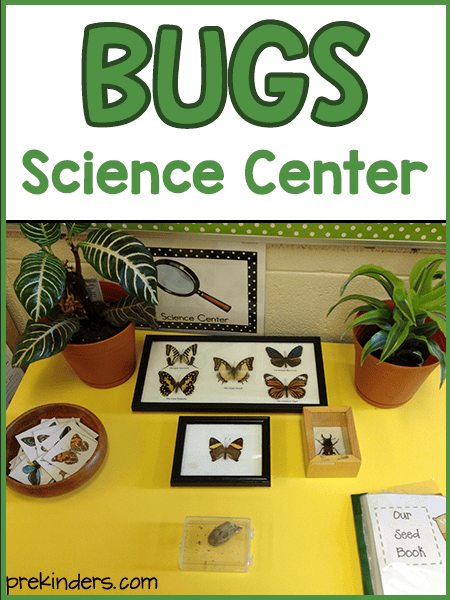In the Spring, I set up a bug science center on a display table with all things bugs. I have done a bug theme in September before because of all the bugs the kids were seeing outside, but most often, we learn about bugs in the Spring.
Real Bug Specimens
Over the years I have collected several materials for learning about bugs. This bug science center picture below has some real bug specimens: I have real butterflies and a beetle. I bought those at a craft fair. I have a real cocoon and a set of butterfly matching cards, which is a free printable I have here on PreKinders. We have a lot of cicadas where I live, so I also have some cicada shells that are not pictured here.
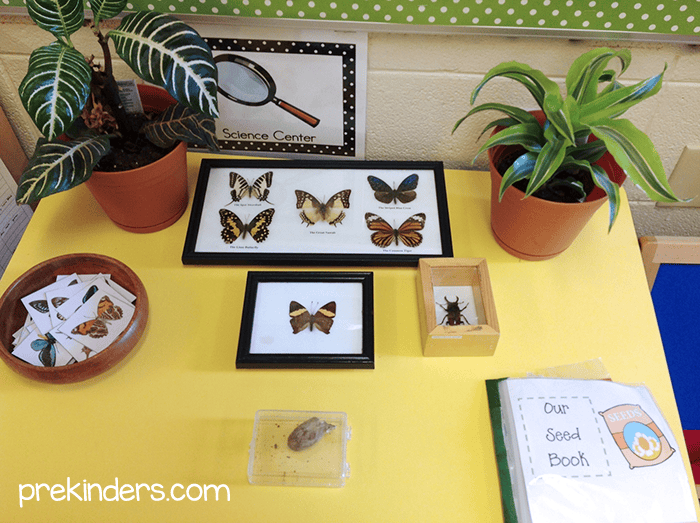
The bug science center picture below shows some of the same bug specimens along with a cup of live caterpillars and live ladybug larvae. These are both from Insect Lore. We watched the caterpillars transform in butterflies, and the larvae transform into ladybugs.
Free printable Butterfly Life Cycle Journals are available here.
The big green bug holder is a set came from Lakeshore and contains real bug specimens in acrylic blocks.
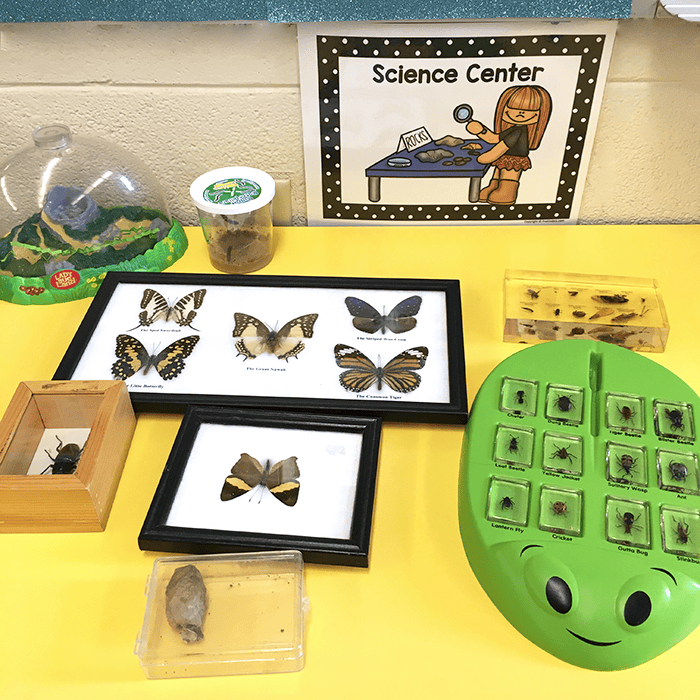
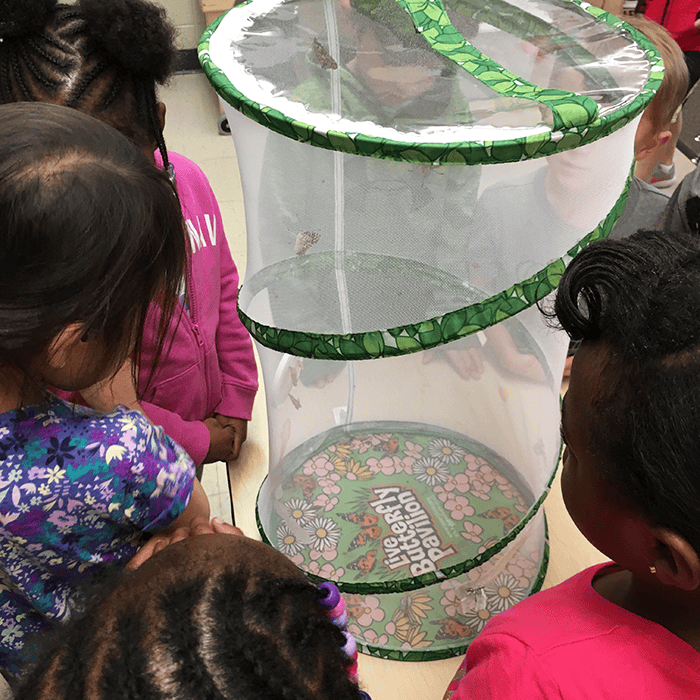
Bug Boxes in the Bug Science Center
I also keep dollar store bug boxes in my science center, so we can collect and observe bugs the kids find. Except in this case, we found tiny frogs. We only observe any critters for one day, and then set them free.
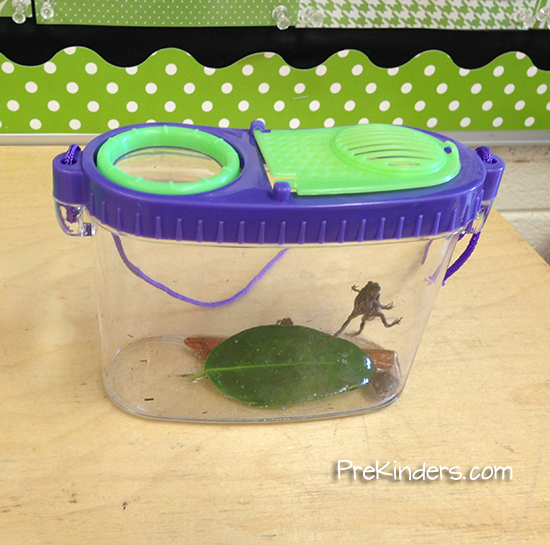
Magnifying Glasses in the Bug Science Center
Add magnifying glasses to the Science Center for children to look at bugs (real or not) up close. These boxes pictured below contain realistic looking plastic bugs. Children can also sort the bugs into the correct boxes.
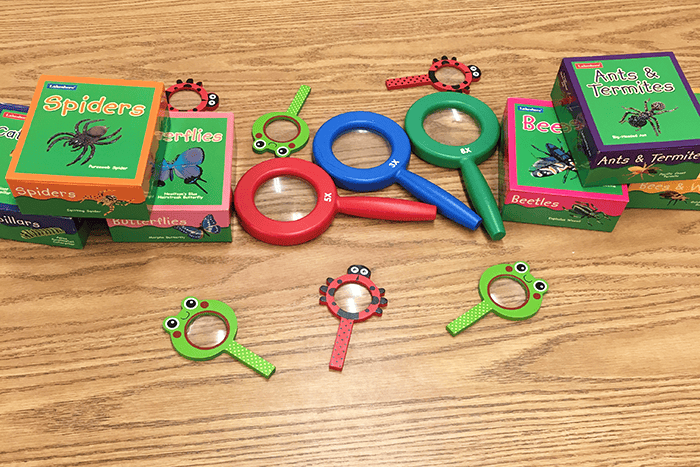
You can also have children look at real bug specimens with magnifying glasses. The printable card in the picture below is available in the Science Tools: Magnifying Glass Idea Cards pack.
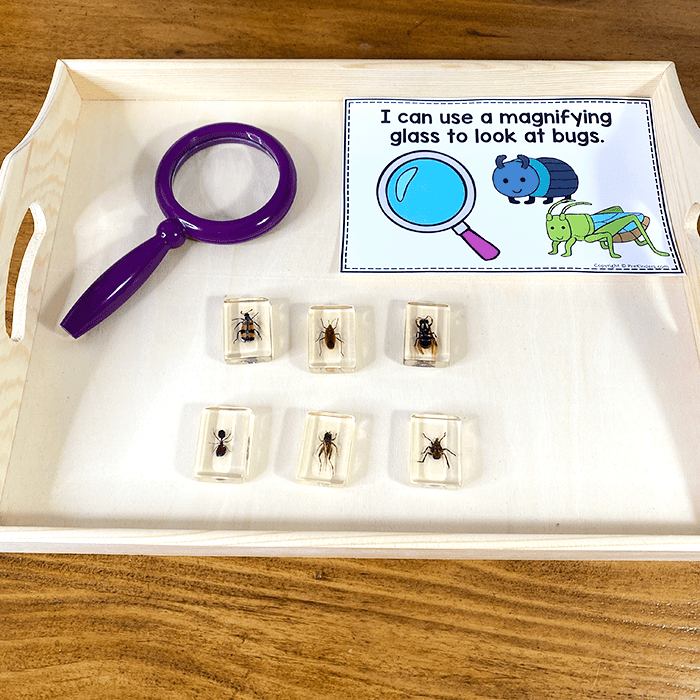
This set of printable cards is available in the Science Tools: Magnifying Glass Idea Cards pack. The ant card can be used with a classroom ant farm. The ladybug card can be used with a ladybug growth kit. The butterfly card can be used with a butterfly growth kit.
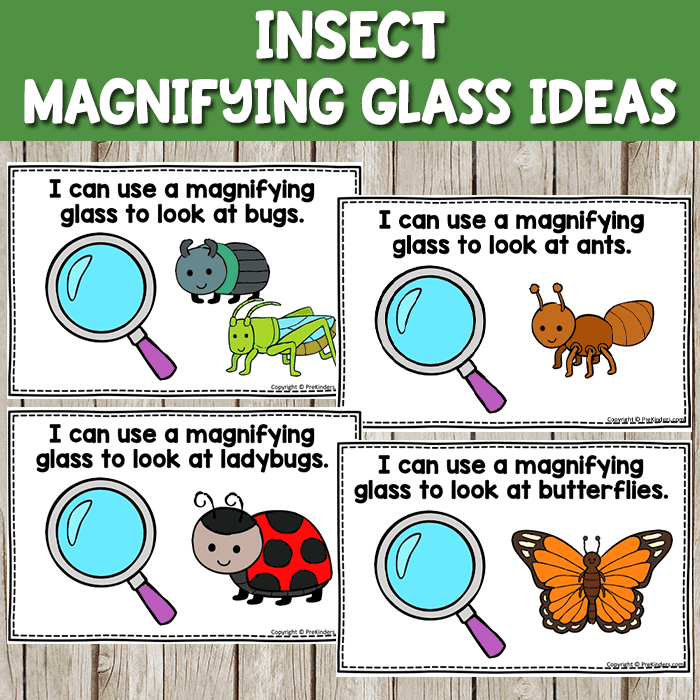
Find more Bug Activities for Pre-K on the category page.
